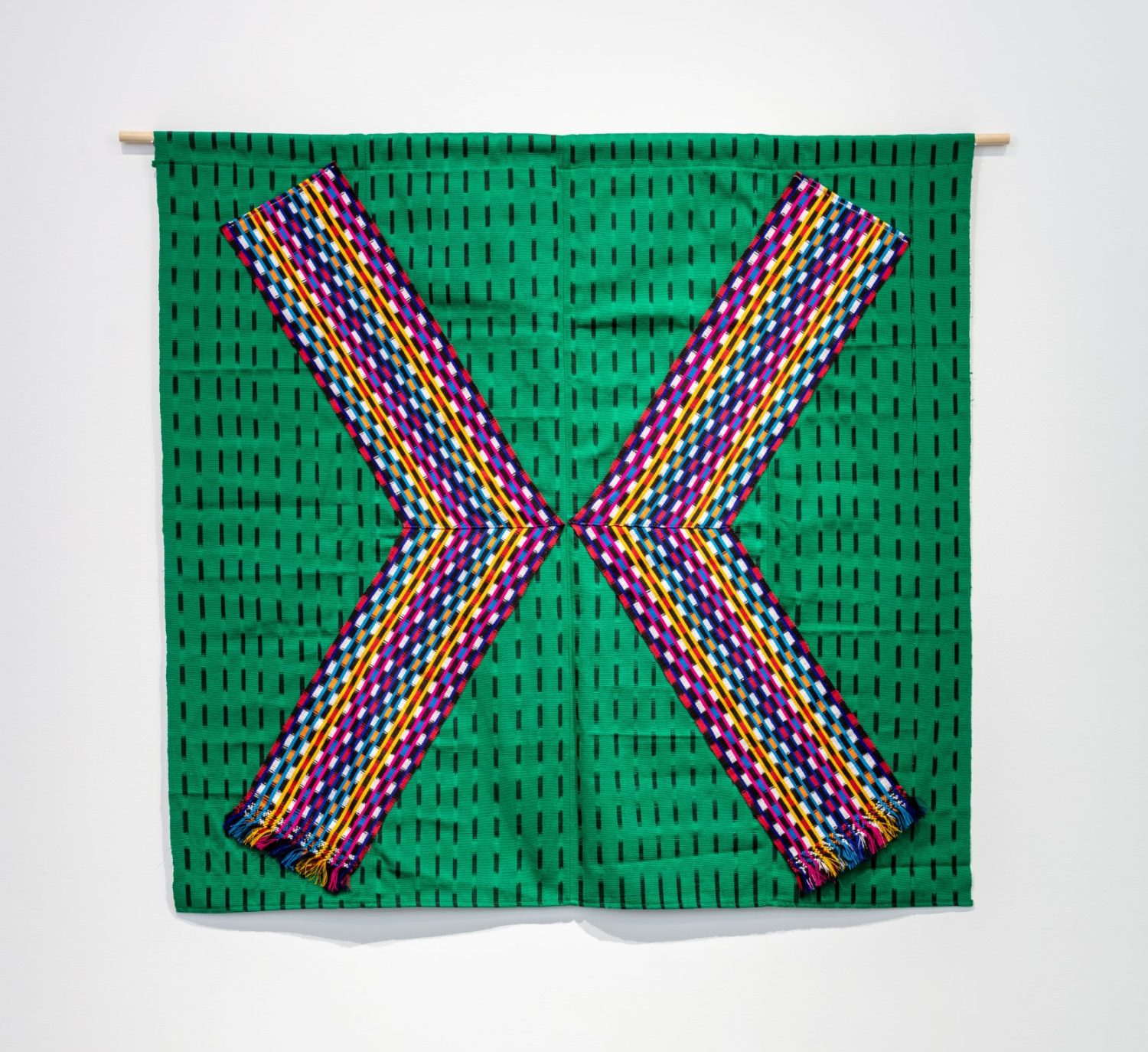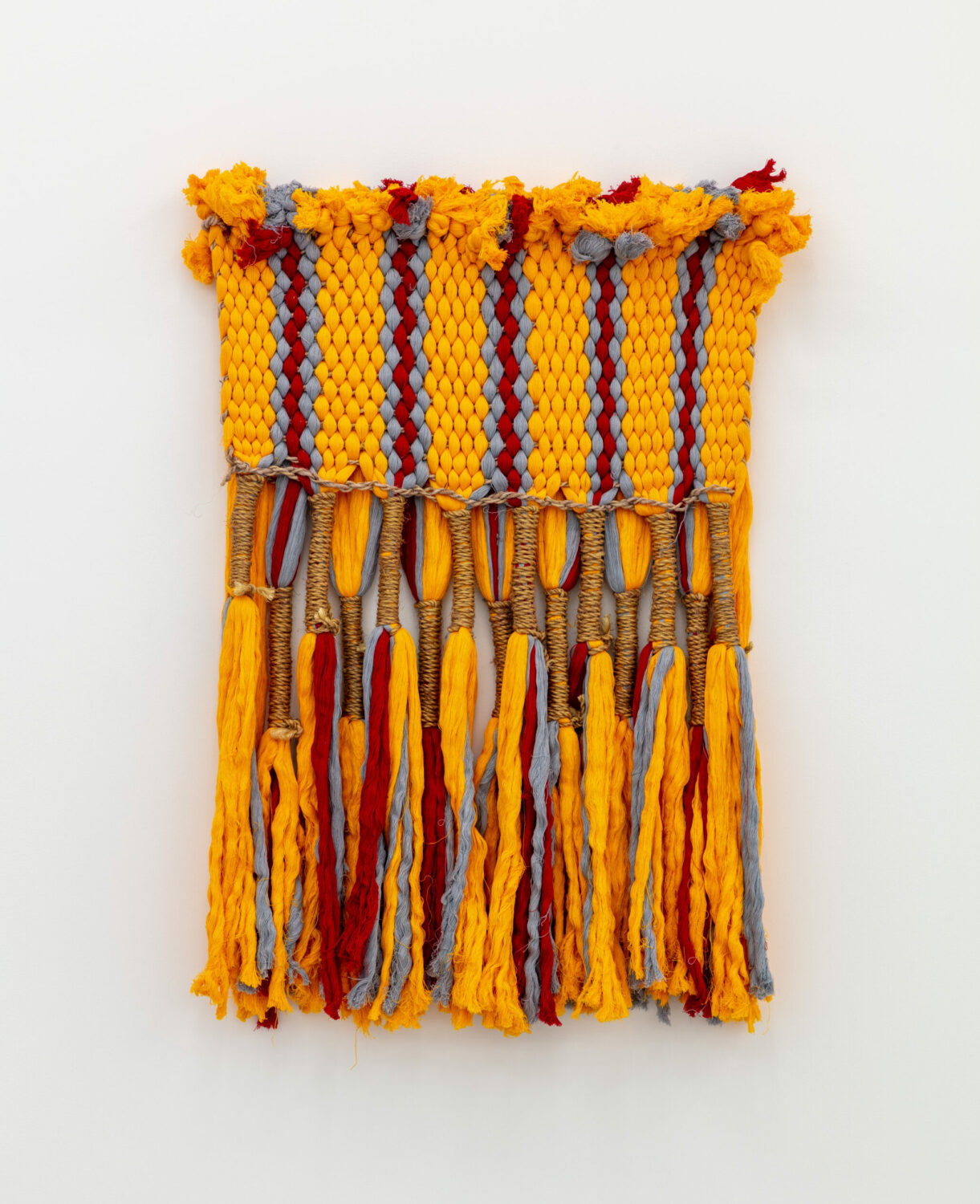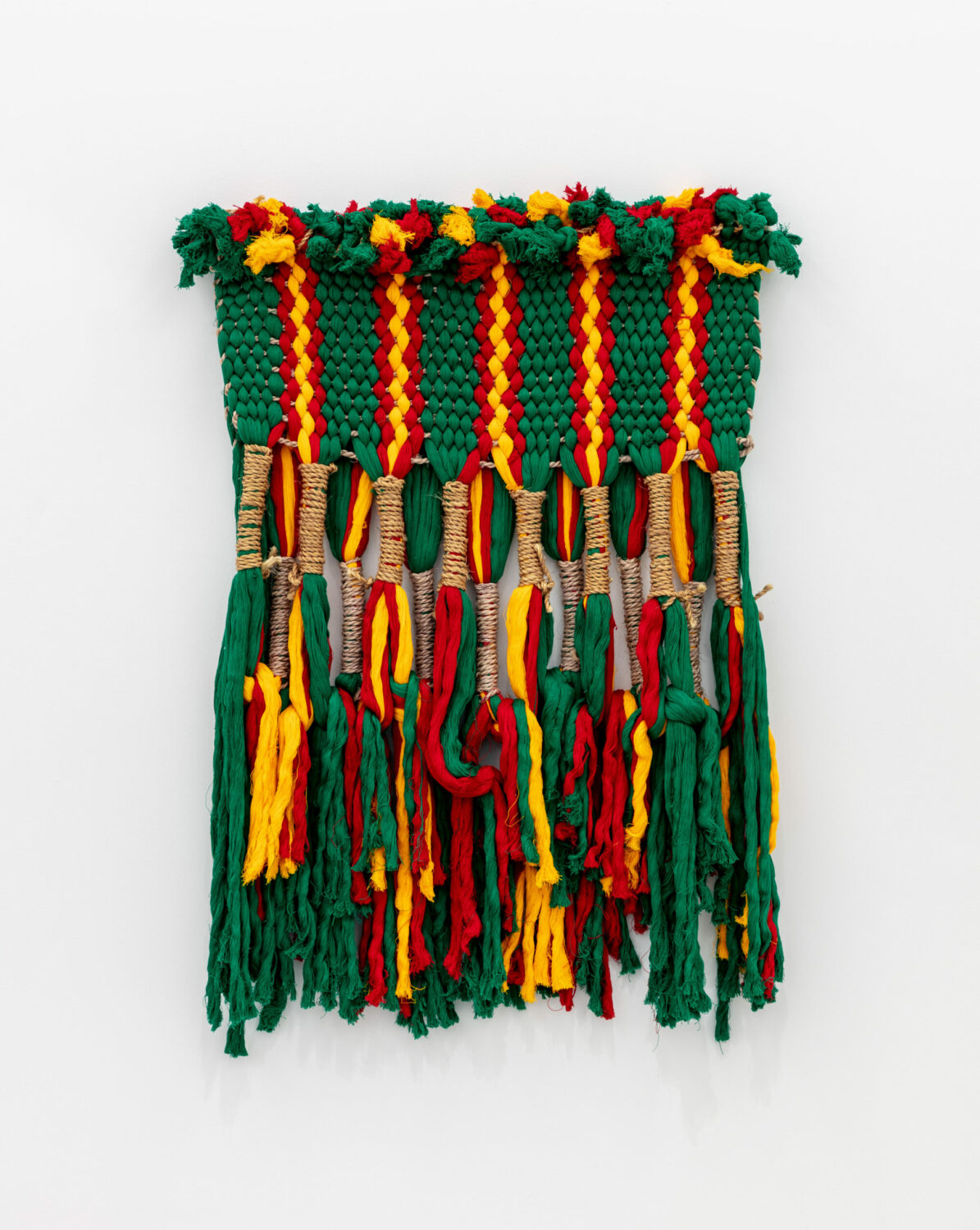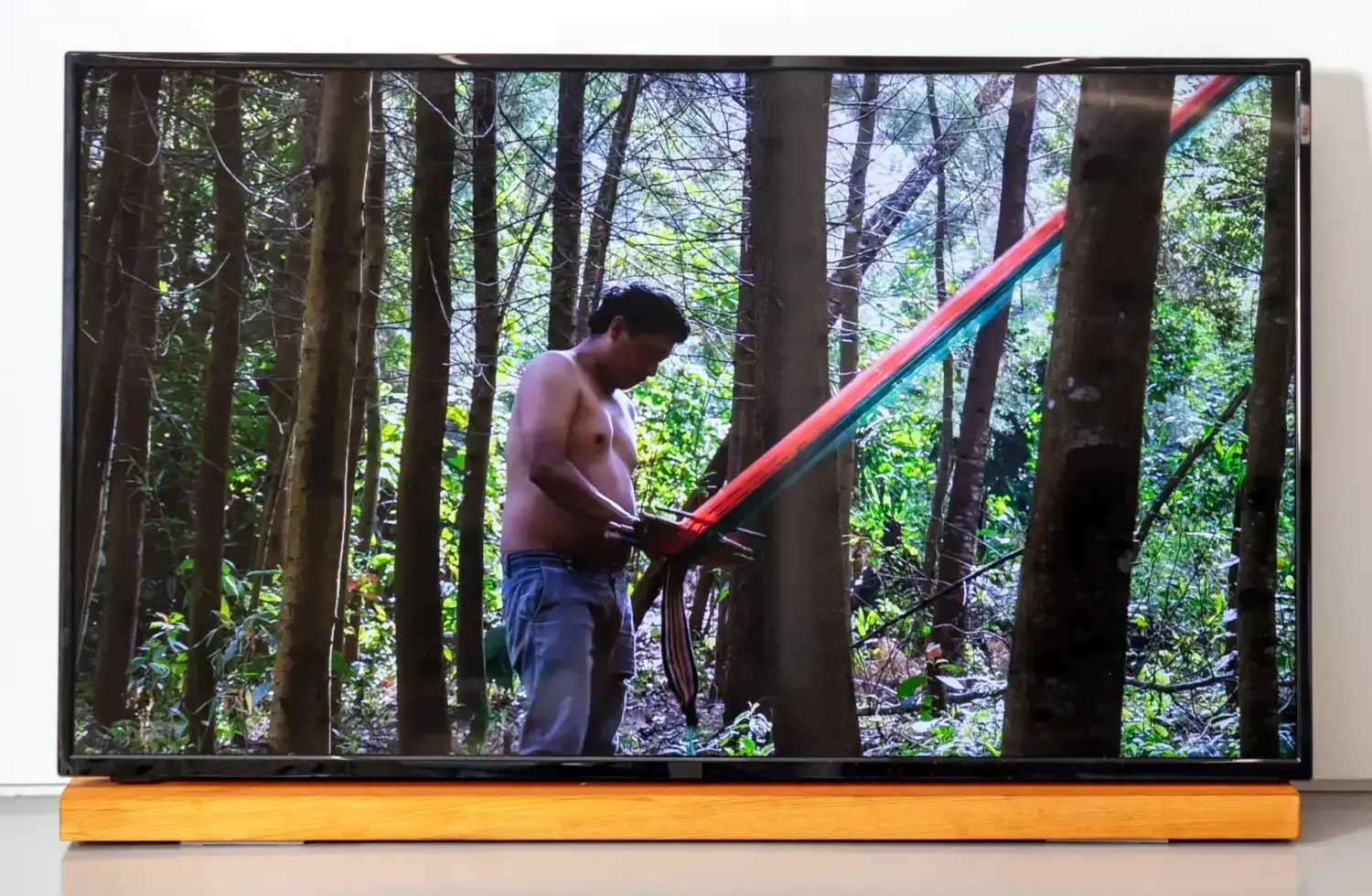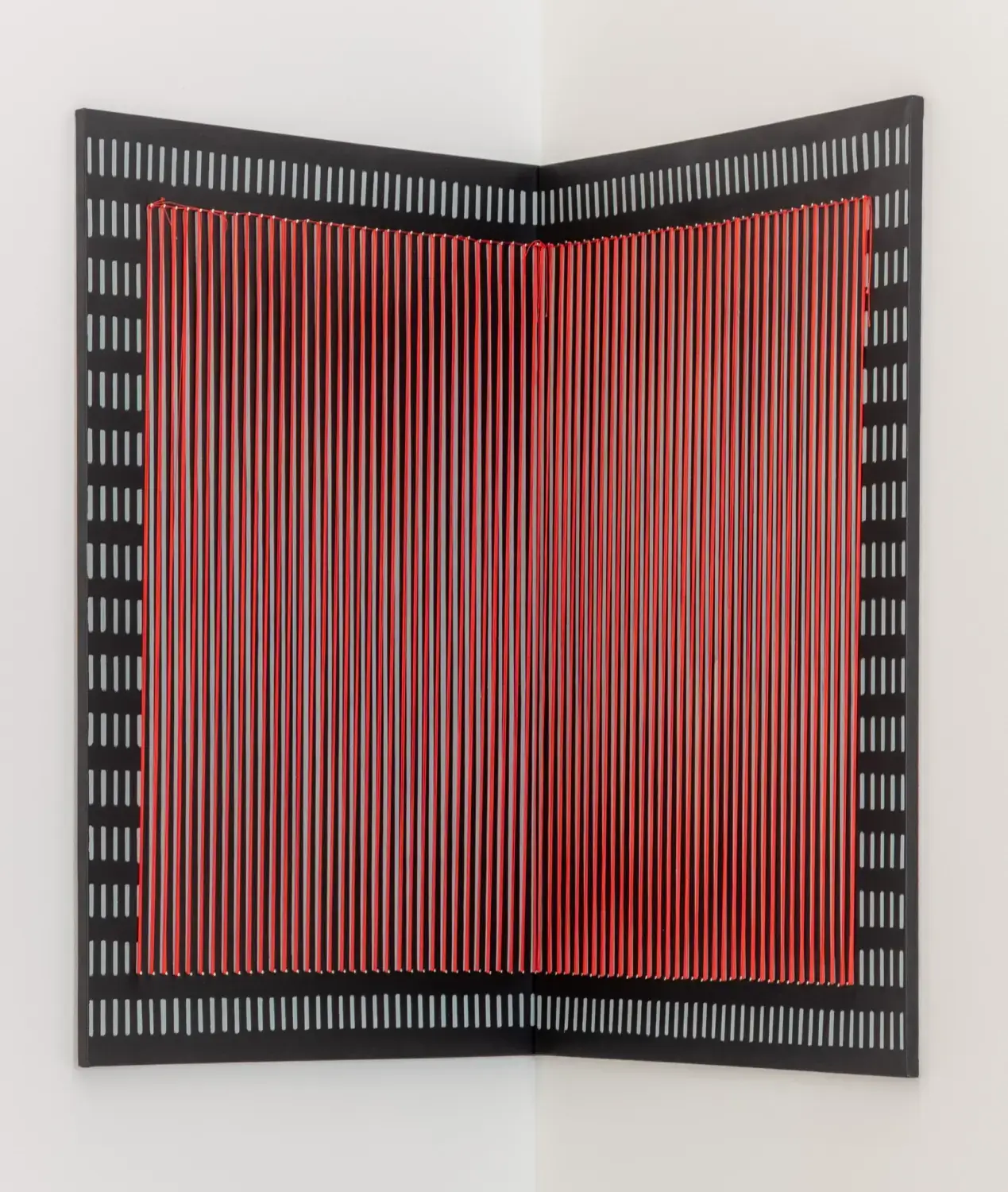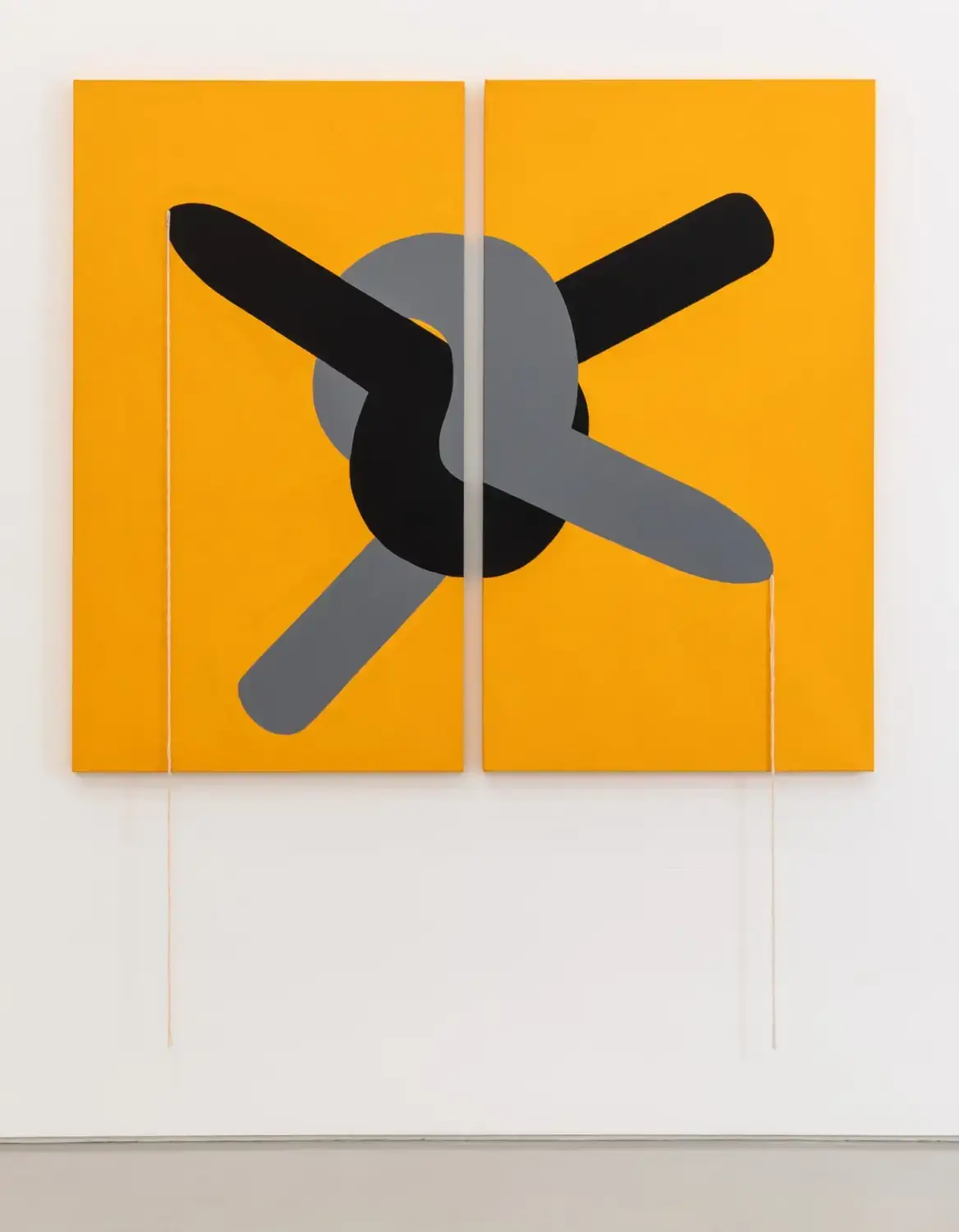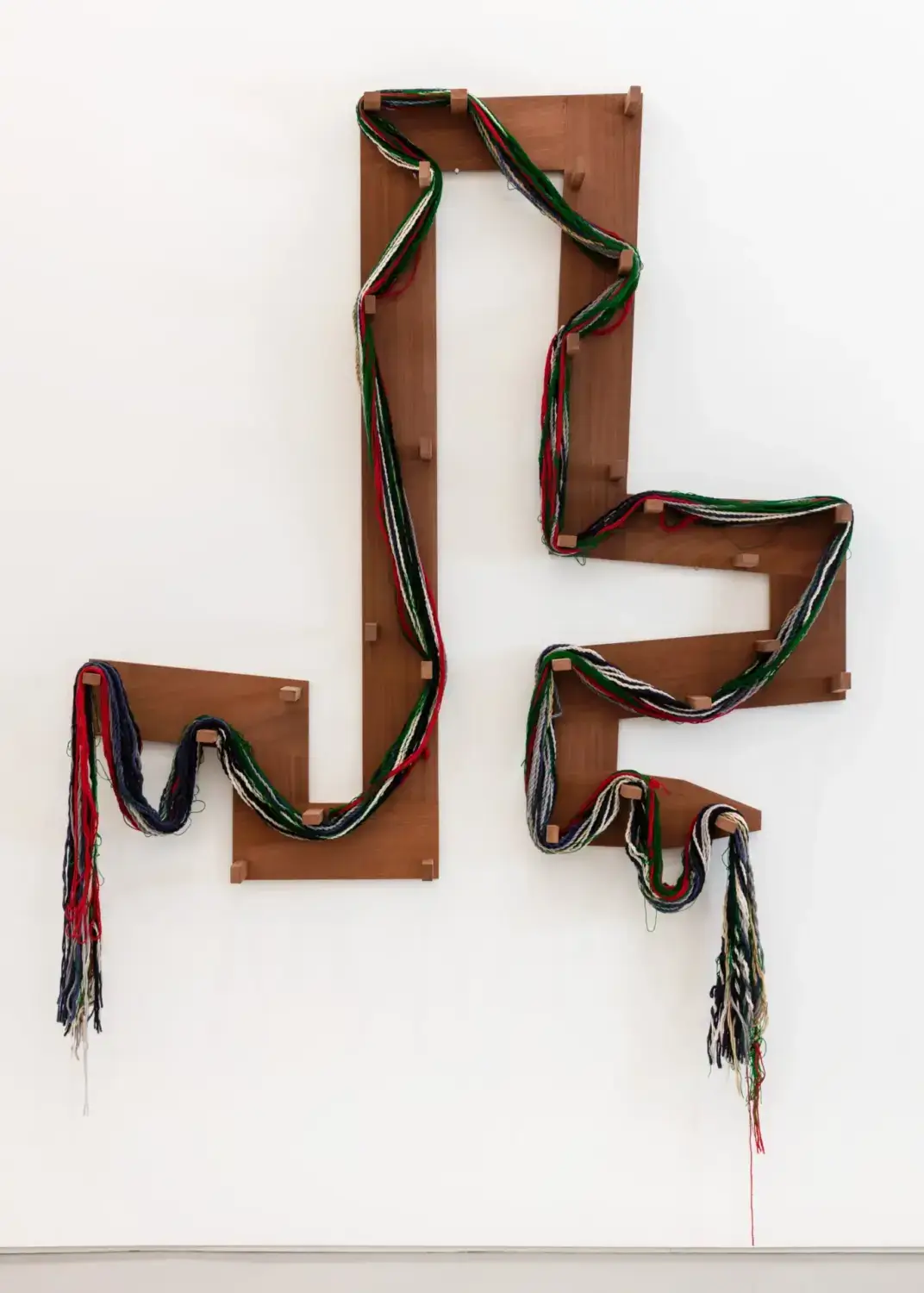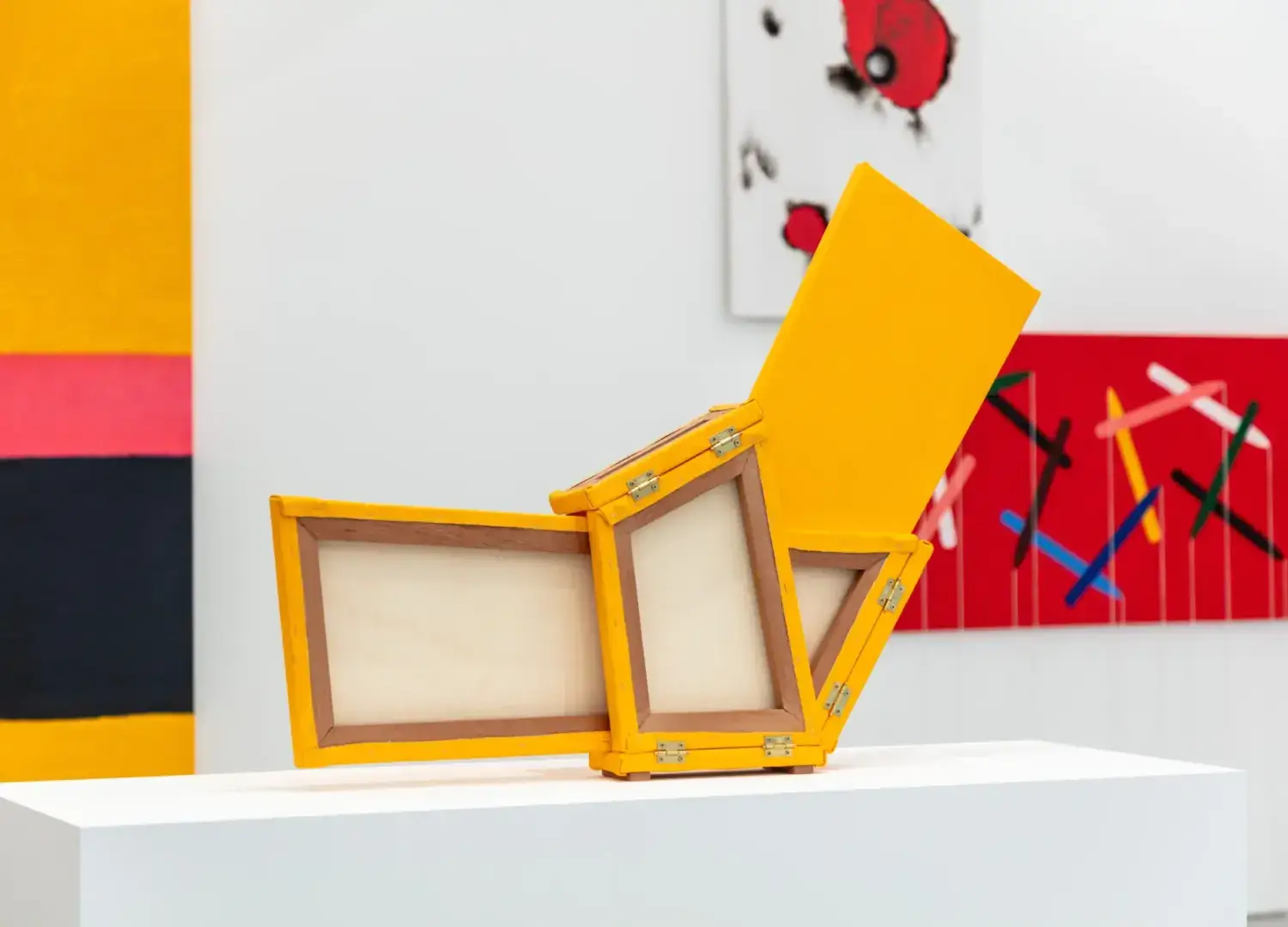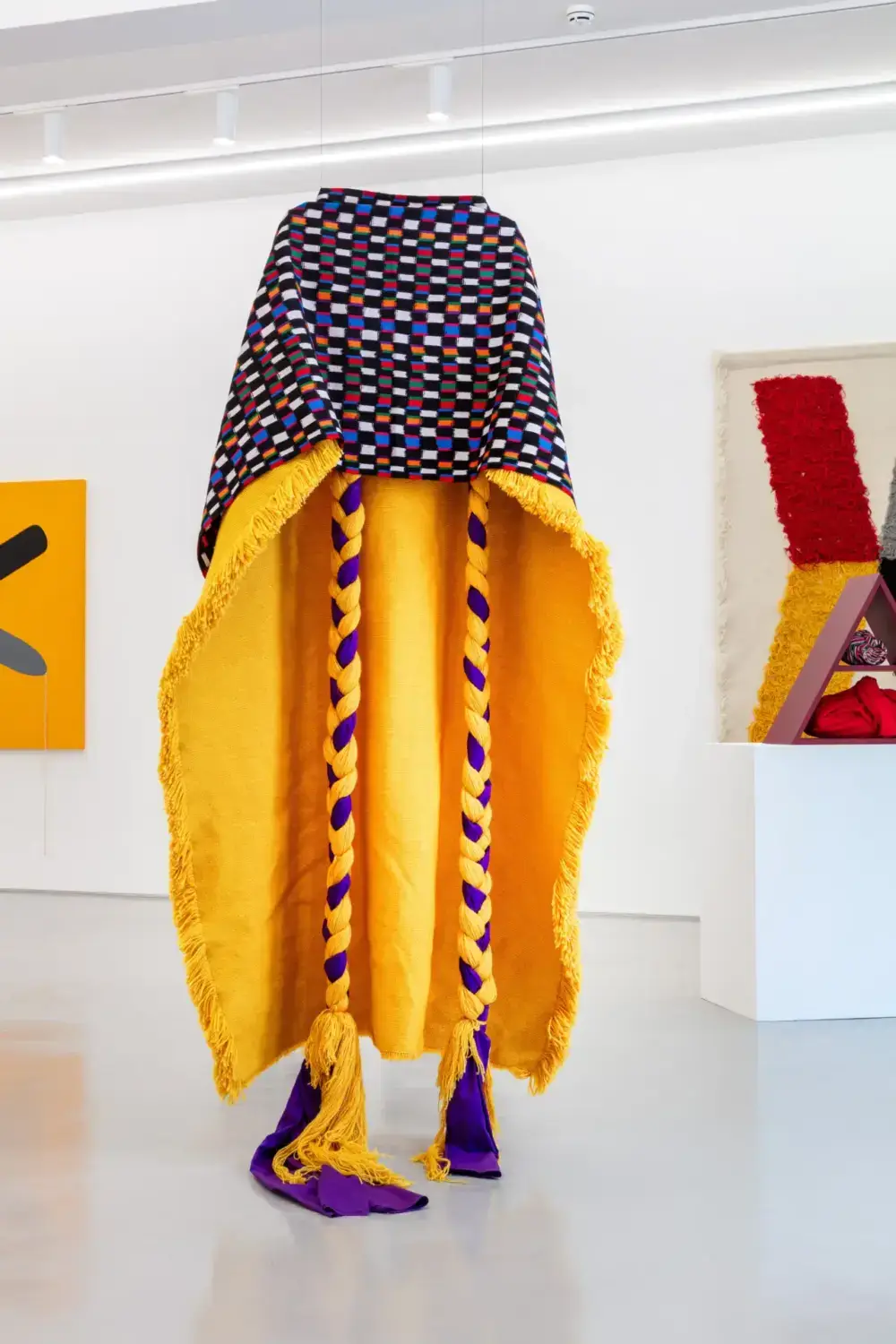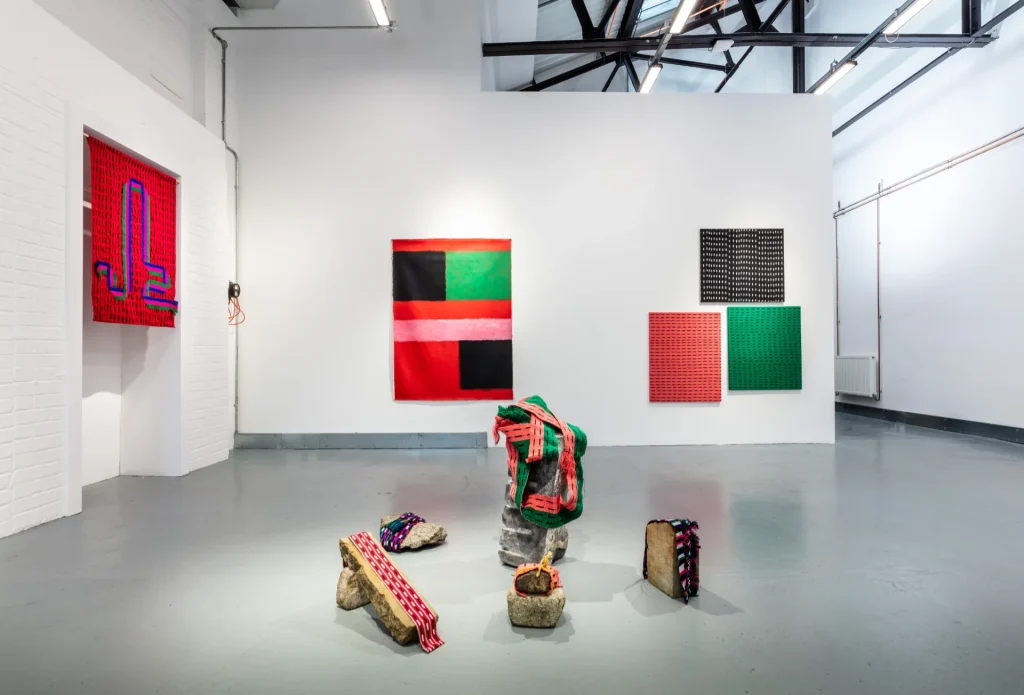Works
"Guatemala has an enormous cultural richness when it comes to textiles, and it is usually women who design and weave them. Their skills are transferred from generation to generation. The materials and tools used in the art of weaving fulfil fundamental functions. For example, the warping frame is essential for designing textiles. It consists of a flat wooden surface fitted with pegs. In the case of a backstrap loom, counting the threads, tying, and measuring them, is achieved by using one's fingers, thus conjoining the tool with the body"
Video

Video
Antonio Pichillá discussing his exhibition 'In front of the lake'








